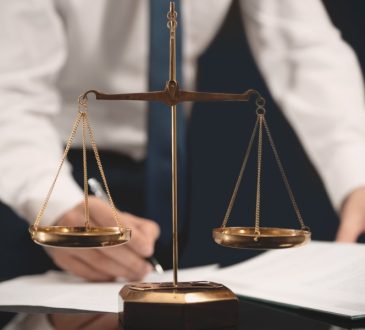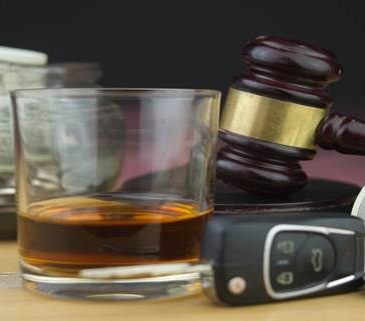
A personal injury claim is crucial if you’ve been injured by the negligence of someone else. It will help you get compensation for medical expenses, lost wages, and other damages. The most common question is, “How long will it take before my personal injury claim pays out?” This question has a complex answer that depends on many factors. This article will explain the stages involved in a personal injury claim and factors that can affect how quickly you receive compensation.
1. The First Steps in a Personal Injuries Case
The first step in any case involving personal injury is to gather evidence and file a claim. After an accident, it’s crucial to collect witness statements, photographic proof, and medical care. You or your attorney can start the claim procedure after gathering all the information. This usually involves notifying insurance companies of the other parties.
Medical Treatment and Maximum Improvement
Wait until you have reached “Maximum Medical Improvement” (MMI) before deciding on the value of your claim. Your condition will be determined by a medical professional as stable, and that no further improvement in your condition is expected. The length and severity of an injury will determine the time required to reach MMI. The time can vary from a few weeks to several months. Once you reach the MMI, you will be able to better understand your medical costs and their long-term effects.
2. Send a demand letter and start of negotiations
You or your attorney will then send a letter of insurance demand to the other party after you have gathered all your medical records, bills, and any other evidence that supports your claim. This letter will detail your injuries, their costs, and the amount of compensation you are seeking.
After assessing the claim, the insurance company decides whether to settle, negotiate, or deny. Insurance companies may take different amounts of time to reply. In simple situations, an insurance company might respond within a few weeks. More complex cases may take months. Initial negotiations can extend the timeline if you accept a settlement offer that is less than you requested. Negotiations may last a few weeks or several months, depending on the urgency of both parties to reach an agreement.
3. Pre-Litigation Settlement vs. Filing a Lawsuit
Negotiations can lead to an agreement between the parties that a lawsuit is not necessary. Settlements before litigation are the fastest method to settle personal injury cases. After both parties sign a settlement agreement, payments begin. You can sue if the insurance company doesn’t offer you a fair amount of money.
The discovery phase is followed by the filing of the lawsuit
The “discovery” phase begins after a lawsuit is filed. Both parties will gather evidence, take sworn depositions, and build their case. Discovery can last several months, or even an entire year, if the case is complex and involves multiple witnesses.
Settlements are often reached during the discovery stage. Settlements are still advantageous at this stage, since they save time and money by avoiding a trial. Anyone looking for a quick settlement should consider the extended timeline of discovery.
4. Mediation and Arbitration
In certain cases, the court may require or recommend mediation or arbitration. Both are alternative dispute resolution methods that allow the parties to try and reach an agreement, without having to go to court. Arbitration involves the formal decision of an arbitrator, while mediation is facilitated by a neutral mediator.
Arbitration and mediation are often quicker than trials and can result in a more rapid resolution of the claim. This stage can be affected by the availability of arbitrators and mediators as well as the complexity of the issues. Mediation or arbitration can take several months, depending on the case.
5. Trial Process
If a settlement cannot be reached through mediation or arbitration, the case will proceed to trial. Trials for personal injury can be long, and sometimes last up to a year. The court’s accessibility and complexity determine the trial dates. Backlogs of cases in the court may delay some cases.
Both parties will make their case, present evidence and question witnesses before a judge or jury. After the trial, the judge or jury determines the amount of compensation. The defendant, or their insurance company, is typically required to pay out the compensation amount within a specified timeframe. The amount varies depending on the jurisdiction.
6. Appeals Process
The party that is dissatisfied with the trial verdict can appeal. The appeal process may take several months or even years to complete, as appellate courts review legal arguments and the trial proceedings. The appeal may delay payment until it is resolved.
7. Factors that affect the length of a personal injury claim
There are many factors that can influence the amount of time it takes to settle an injury claim.
- Injury severity: Serious injury requires more medical documentation, and recovery times can be longer. This may cause the claim to be delayed.
- Complexity of the Case: Cases involving multiple parties, disputed responsibilities, or extensive evidence may take longer to resolve.
- Negotiations can be delayed by an insurer who disputes liability or damages.
- Court Availability: In jurisdictions with high traffic, the availability and accessibility of courts can significantly impact timelines.
- Legal Representation: A lawyer who is experienced in negotiation and knows the value of the claim can speed up the process.
Payments for personal injury claims can range from several months up to several years. It is the same for both simple and complex cases that go to court. You can manage your expectations by understanding the factors and stages that influence the timeline for a personal injury claim. You will receive the compensation you deserve if you are patient and prepared.
Jeanette Secor PA Attorney At Law wrote this article.
Jeanette Secor has been providing justice to injured people in St. Petersburg for over 20 years. Jeanette Secor is a renowned Pinellas County personal injury attorney. She has represented clients successfully in motorcycle and car accidents.




